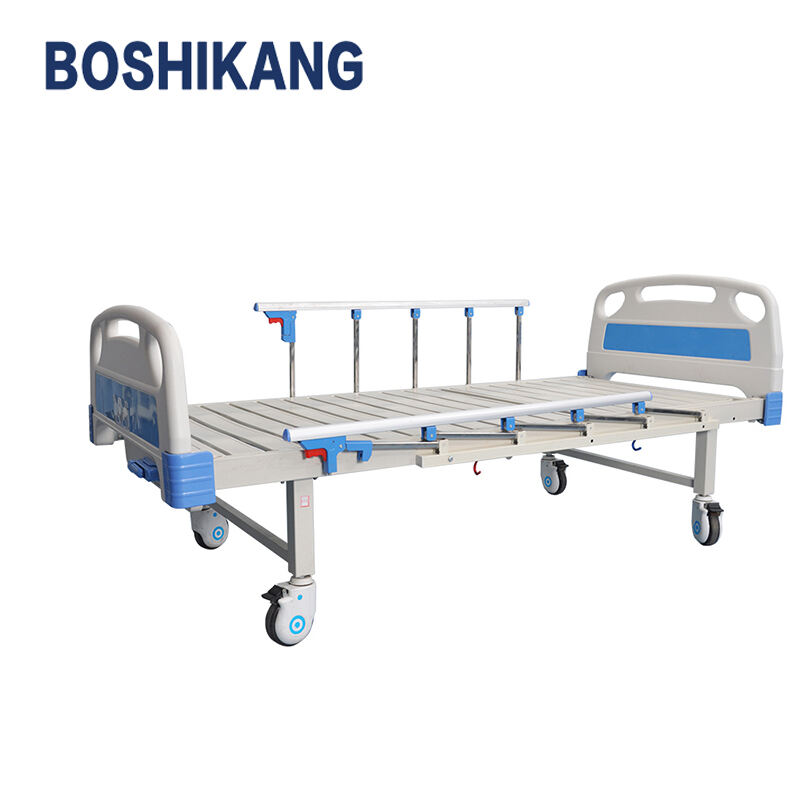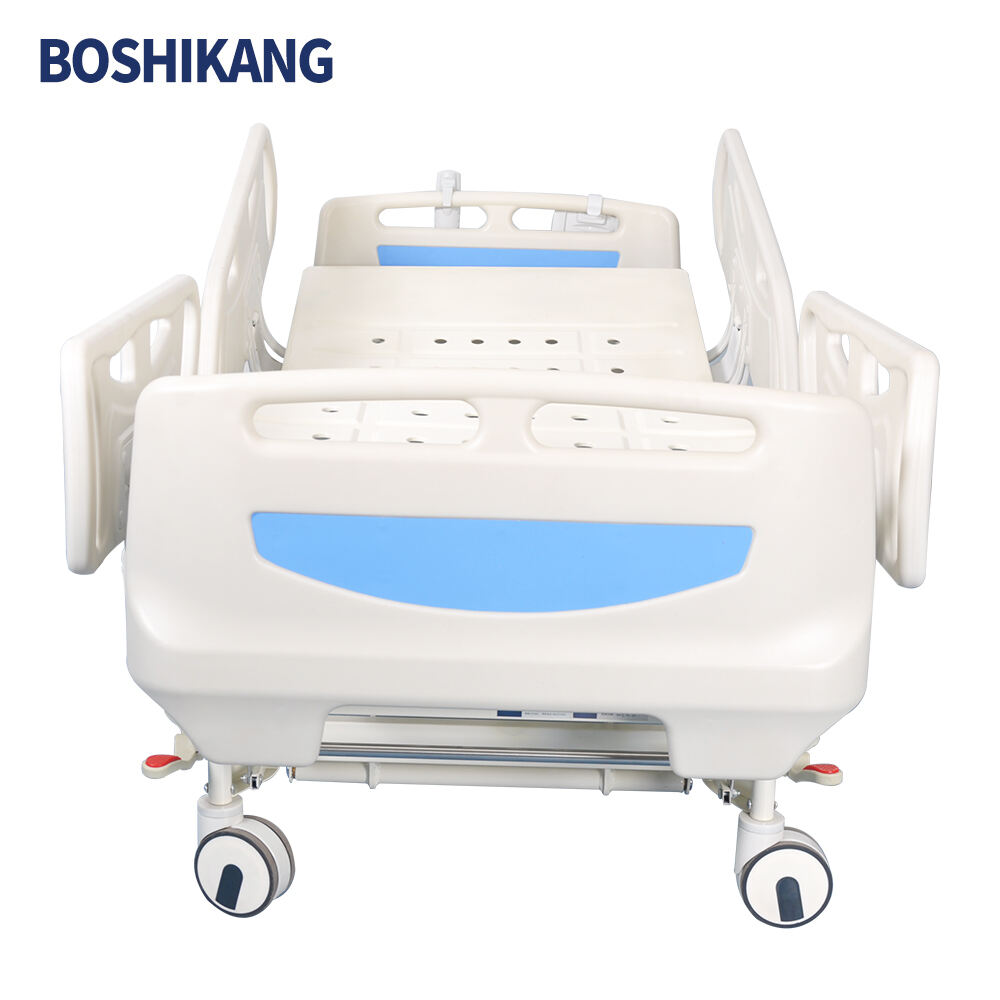Healthcare facilities worldwide face mounting pressure to deliver quality patient care while managing increasingly tight budgets. In this challenging environment, manual hospital beds emerge as a strategic solution that balances functionality, reliability, and cost-effectiveness. These fundamental pieces of medical equipment provide essential patient positioning and comfort features without the complexity and expense associated with electric alternatives. Understanding the financial advantages and practical benefits of manual hospital beds can help healthcare administrators make informed decisions that optimize both patient outcomes and operational efficiency.

Financial Advantages of Manual Hospital Beds
Lower Initial Investment Costs
The most immediate financial benefit of manual hospital beds lies in their significantly lower purchase price compared to electric models. Healthcare facilities can typically acquire manual beds at 40-60% less cost than their electric counterparts, allowing for substantial savings when outfitting multiple patient rooms or entire units. This cost differential becomes particularly important for smaller healthcare facilities, long-term care centers, and developing healthcare systems where budget constraints are a primary concern. The reduced initial investment enables facilities to allocate resources to other critical medical equipment and patient care initiatives.
Beyond the base unit cost, manual beds require fewer specialized components and accessories, further reducing the total investment required. The simplicity of manual mechanisms means fewer precision parts, electronic components, and specialized safety systems that add to manufacturing costs. This streamlined design philosophy translates directly into savings for healthcare purchasers without compromising essential functionality for patient positioning and comfort.
Reduced Ongoing Operational Expenses
Manual hospital beds offer significant advantages in ongoing operational costs through their minimal energy consumption requirements. Unlike electric beds that continuously draw power for motor systems, control panels, and safety mechanisms, manual beds operate entirely through mechanical systems that require no electricity. This elimination of power consumption can result in meaningful energy cost savings when multiplied across dozens or hundreds of beds in a healthcare facility, contributing to both cost reduction and environmental sustainability goals.
The operational cost benefits extend beyond energy savings to include reduced insurance premiums and liability exposure. Manual systems present fewer potential failure points and safety risks compared to complex electric mechanisms, which can translate to lower equipment insurance costs and reduced exposure to malfunction-related incidents. These indirect cost savings, while sometimes overlooked, contribute meaningfully to the total cost of ownership calculations for healthcare facilities.
Maintenance and Reliability Benefits
Simplified Maintenance Requirements
The mechanical simplicity of manual hospital beds translates into straightforward maintenance requirements that healthcare facilities can often handle with existing maintenance staff. Unlike electric beds that require specialized technical knowledge and electronic diagnostic equipment, manual beds use basic mechanical components that are easily understood and serviced by general maintenance personnel. This accessibility reduces dependency on specialized service technicians and allows for faster resolution of maintenance issues, minimizing bed downtime and ensuring consistent patient care capabilities.
Routine maintenance tasks for manual beds typically involve basic lubrication, adjustment, and cleaning procedures that can be performed with standard tools and supplies. The absence of complex electronic systems eliminates the need for specialized diagnostic equipment, software updates, or electronic component replacements that characterize electric bed maintenance. This simplification reduces both the skill level required for maintenance personnel and the inventory of specialized parts and tools needed to support the equipment.
Enhanced Durability and Longevity
Manual hospital beds demonstrate exceptional durability due to their robust mechanical construction and absence of sensitive electronic components. The steel frame construction and mechanical adjustment systems are designed to withstand years of continuous use in demanding healthcare environments without significant degradation in performance. This durability translates into extended service life, often exceeding 15-20 years with proper maintenance, compared to electric beds that may require major component replacements or complete replacement more frequently due to electronic system obsolescence or failure.
The mechanical nature of manual hospital beds provides inherent resistance to environmental factors that can compromise electronic systems. Exposure to cleaning chemicals, moisture, electromagnetic interference, and temperature fluctuations that are common in healthcare settings have minimal impact on mechanical bed functions. This environmental resilience ensures consistent performance and reduces the likelihood of unexpected failures that can disrupt patient care and require costly emergency repairs or replacements.
Operational Efficiency and Staff Benefits
Staff Training and Usability
Healthcare staff can quickly master the operation of manual hospital beds due to their intuitive mechanical controls and straightforward adjustment procedures. The learning curve for new staff members is minimal, reducing training time and costs while ensuring that all team members can effectively operate the equipment from their first day of patient care. This operational simplicity becomes particularly valuable in high-turnover environments or when deploying temporary staff during peak demand periods, as extensive equipment training is not required.
The reliability of manual controls eliminates concerns about electronic malfunctions or control panel failures that could prevent staff from making necessary patient adjustments. Healthcare workers can confidently operate manual beds without worrying about system failures or the need to troubleshoot electronic issues during critical patient care situations. This operational confidence contributes to staff efficiency and patient safety by ensuring that bed adjustments can always be made when medically necessary.
Workflow Integration
Manual hospital beds integrate seamlessly into existing healthcare workflows without requiring modifications to accommodate electrical connections, battery charging protocols, or electronic system monitoring. The independence from power sources allows for flexible room configurations and eliminates concerns about power outlet availability or electrical safety in patient care areas. This flexibility supports efficient room utilization and simplifies facility design and renovation projects.
The consistent performance characteristics of manual beds support standardized care protocols and staff expectations across different units and facilities. Healthcare workers can rely on uniform bed operation regardless of the specific unit or model, reducing the potential for operational errors and supporting consistent patient care delivery. This standardization benefit becomes particularly important for healthcare systems operating multiple facilities or for staff who work across different units or shifts.
Strategic Considerations for Healthcare Facilities
Budget Allocation Optimization
Choosing manual hospital beds enables healthcare facilities to optimize budget allocation by directing cost savings toward other critical areas of patient care infrastructure. The reduced equipment costs can be redirected to fund additional medical devices, staff training programs, facility improvements, or patient care services that directly impact health outcomes. This strategic approach to resource allocation allows facilities to maximize the impact of available funding while maintaining essential patient positioning and comfort capabilities through reliable manual bed systems.
The predictable cost structure of manual beds supports more accurate long-term financial planning and budget forecasting. Unlike electric beds that may require unexpected repairs, component upgrades, or early replacement due to technological obsolescence, manual beds provide stable, predictable costs throughout their service life. This financial predictability enables healthcare administrators to plan capital expenditures more effectively and allocate resources with greater confidence in long-term cost projections.
Risk Management and Compliance
Manual hospital beds present fewer regulatory compliance requirements compared to electric alternatives, simplifying quality assurance processes and reducing administrative overhead. The absence of complex electronic systems eliminates many potential safety risks and regulatory concerns associated with electrical medical devices, streamlining compliance documentation and inspection procedures. This simplified compliance landscape reduces administrative costs and allows quality assurance staff to focus on other critical patient safety initiatives.
The inherent safety characteristics of manual beds, including the absence of electrical hazards and the mechanical reliability of adjustment systems, contribute to reduced liability exposure and improved patient safety profiles. Healthcare facilities can confidently deploy manual beds knowing that the risk of equipment-related incidents is minimized through proven mechanical design principles. This risk reduction supports overall patient safety goals while providing additional financial protection through reduced liability exposure and insurance considerations.
FAQ
How do manual hospital beds compare to electric beds in terms of patient comfort
Manual hospital beds provide excellent patient comfort through their ability to achieve all essential positioning adjustments including head elevation, knee positioning, and overall height adjustment. While the adjustment process requires staff assistance rather than patient-controlled operation, the final positioning capabilities are comparable to electric beds. Many patients actually prefer the stability and reliability of manual systems, particularly in long-term care settings where consistent positioning is more important than frequent independent adjustments. The mechanical precision of manual beds often provides more exact positioning control than electric systems, contributing to patient comfort and clinical effectiveness.
What maintenance training do staff need for manual hospital beds
Staff training for manual hospital beds is straightforward and can typically be completed in a few hours of hands-on instruction. Training covers basic operation of crank mechanisms, proper adjustment procedures, routine cleaning protocols, and identification of potential maintenance issues. Most healthcare facilities can conduct this training internally using existing staff knowledge, eliminating the need for specialized external training programs. The simplicity of manual systems means that staff can quickly become proficient in both operation and basic troubleshooting, reducing dependency on specialized technical support and enabling immediate response to any operational issues.
Are manual hospital beds suitable for all types of healthcare facilities
Manual hospital beds are suitable for a wide range of healthcare facilities including hospitals, long-term care centers, rehabilitation facilities, and smaller healthcare practices. They are particularly well-suited for facilities with budget constraints, those prioritizing operational simplicity, and environments where staff-assisted patient positioning is the standard care model. While intensive care units or specialized medical areas might benefit from the advanced features of electric beds, manual beds effectively serve the majority of general patient care needs across diverse healthcare settings. The versatility and reliability of manual beds make them an excellent choice for facilities seeking dependable, cost-effective patient care solutions.
How long do manual hospital beds typically last in healthcare settings
Manual hospital beds typically provide 15-20 years of reliable service in healthcare settings with proper maintenance and care. The mechanical construction and absence of electronic components contribute to exceptional longevity compared to electric alternatives that may require replacement or major component updates more frequently. Many healthcare facilities report manual beds remaining in service for decades with only routine maintenance and occasional part replacement. This extended service life provides excellent return on investment and reduces the frequency of capital equipment replacement decisions, supporting long-term financial planning and operational stability for healthcare facilities.


